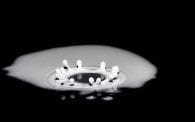Plugged Milk Ducts
Sometimes a milk duct leading from the milk-making cells to the nipple gets plugged, resulting in a tender lump beneath the areola. There may also be a wedge-shaped area of redness extending from the lump back towards the wall of the chest. Unlike mastitis, the pain comes and goes with a plugged duct, and unless the duct is infected, you will not feel generally ill. If left untreated, however, a plugged duct may become infected, resulting in mastitis, infection, or a breast abscess.
To unplug the duct and prevent subsequent infection, try these suggestions:
• Continue to breastfeed on the affected side. By any means, get the milk out! This is the golden rule of preventing engorgement, plugged ducts, and mastitis. Use a breast pump or hand expression if baby is unwilling to nurse.
• Breastfeed on the affected side first. Baby’s sucking is strongest at the beginning of the feed, so he is more likely to dislodge the plug when he starts on the affected breast.
• Vary the baby’s position at the breast, so that all of the milk ducts are drained. Be sure the baby is latched-on well, so that he can nurse efficiently. Try the clutch hold or side-lying position. Before each feeding, massage the affected area by kneading your breast gently from the top of the breast down over the plugged duct toward the nipple.
• Drain the affected breast better by positioning baby so his chin “points” to the area that is sore. For example, if the lump is around 4 o’clock, use the clutch-hold and position baby’s chin around this point on the nipple clock. The lower jaw is often most effective at getting milk out of the breast.
• Apply moist heat compresses for a few minutes before feeding or pumping, or soak the affected breast in warm water or in the shower as described under Engorgement
• Rest. Lie down with the baby and nap-nurse.
• If you notice a small, white dot at the end of the milk duct on your nipple, that is the end of a plugged nipple opening. Apply moist heat on this white blister and with a sterile needle gently pop the blister. If this pore stays plugged, it could block milk drainage and lead to a plugged duct and mastitis.
• Try a pressure massage on the area of your breast that is swollen and painful because of a plugged duct. This may help to loosen the plug. With pressure massage, you do not actually move your hand over the skin as you would with a normal massage. You simply press more and more firmly with the heel of your hand to move the plug in the duct down closer to the nipple.
To do pressure massage, start at the edge of the lumpy area closest to your chest wall. Apply pressure to that area with the heel of your hand to the point just before it becomes too painful. Hold the pressure at that level until the pain eases off. Then increase the pressure again, (without moving your hand) and hold it until the pain eases. Continue to gradually increase pressure at that same site until you are pressing as hard as you can. Then pick your hand up, move it down toward your nipple about a half inch, and repeat the pressure massage in this area. Continue moving your hand a half inch and repeating the massage until you get all the way down to the nipple.
You may see the dried milk come out from an opening in your nipple. Even if the plug doesn’t actually come out, you will at least have dislodged it and moved it toward the nipple so that when baby goes to the breast and sucks, he will remove it with his suction. Always put baby to the breast on the plugged side first, when his sucking will be the strongest.
PREVENTING PLUGGED DUCTS FROM RECURRING
• To prevent plugged ducts, feed baby in different positions with his nose pointing “around the nipple clock,” so that you empty all the milk sinuses and ducts.
• Studies have shown that taking a tablespoon a day of oral granular lecithin or a capsule of 1,200 mg lecithin capsule three to four times a day is helpful in preventing and treating plugged milk ducts.

